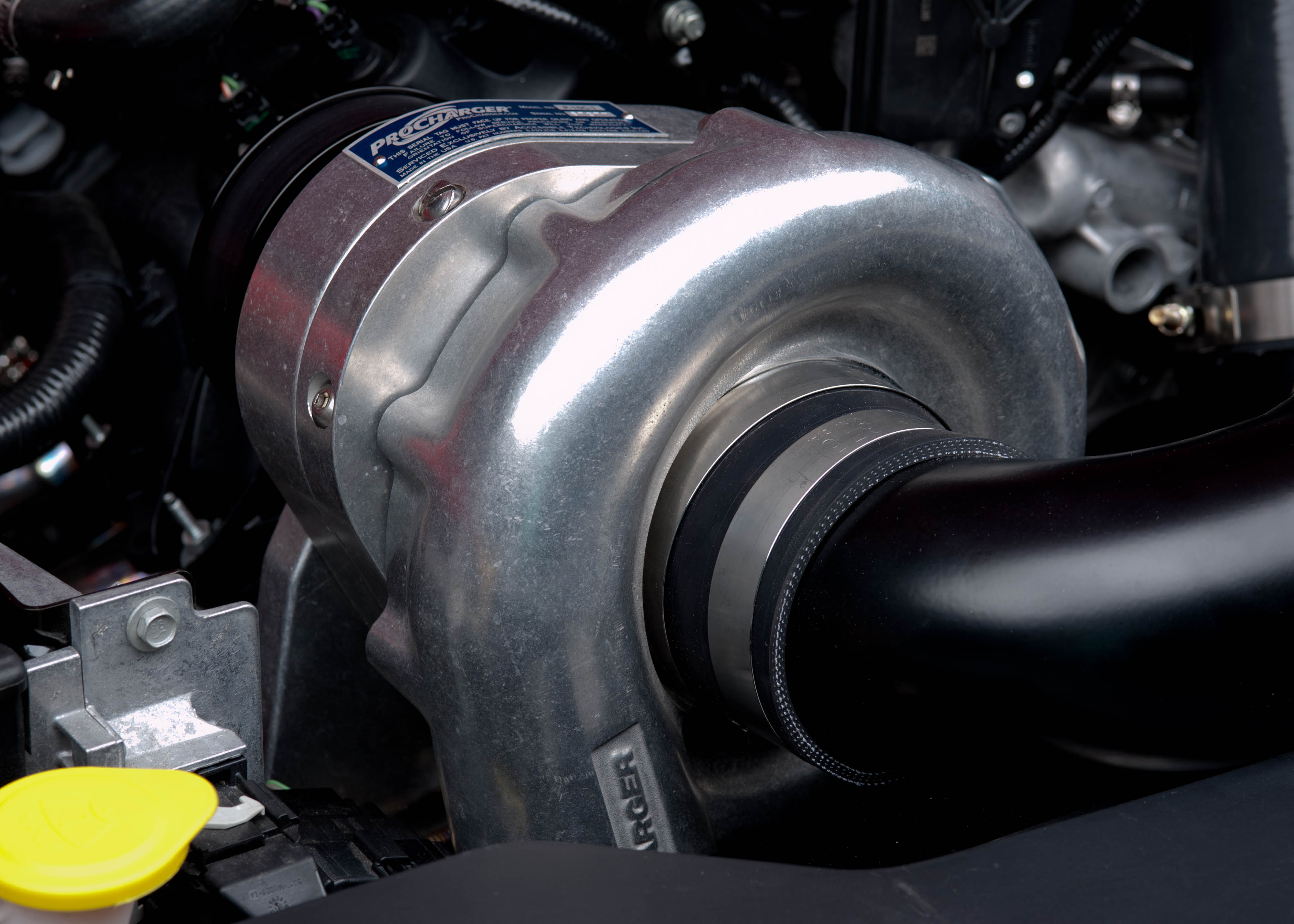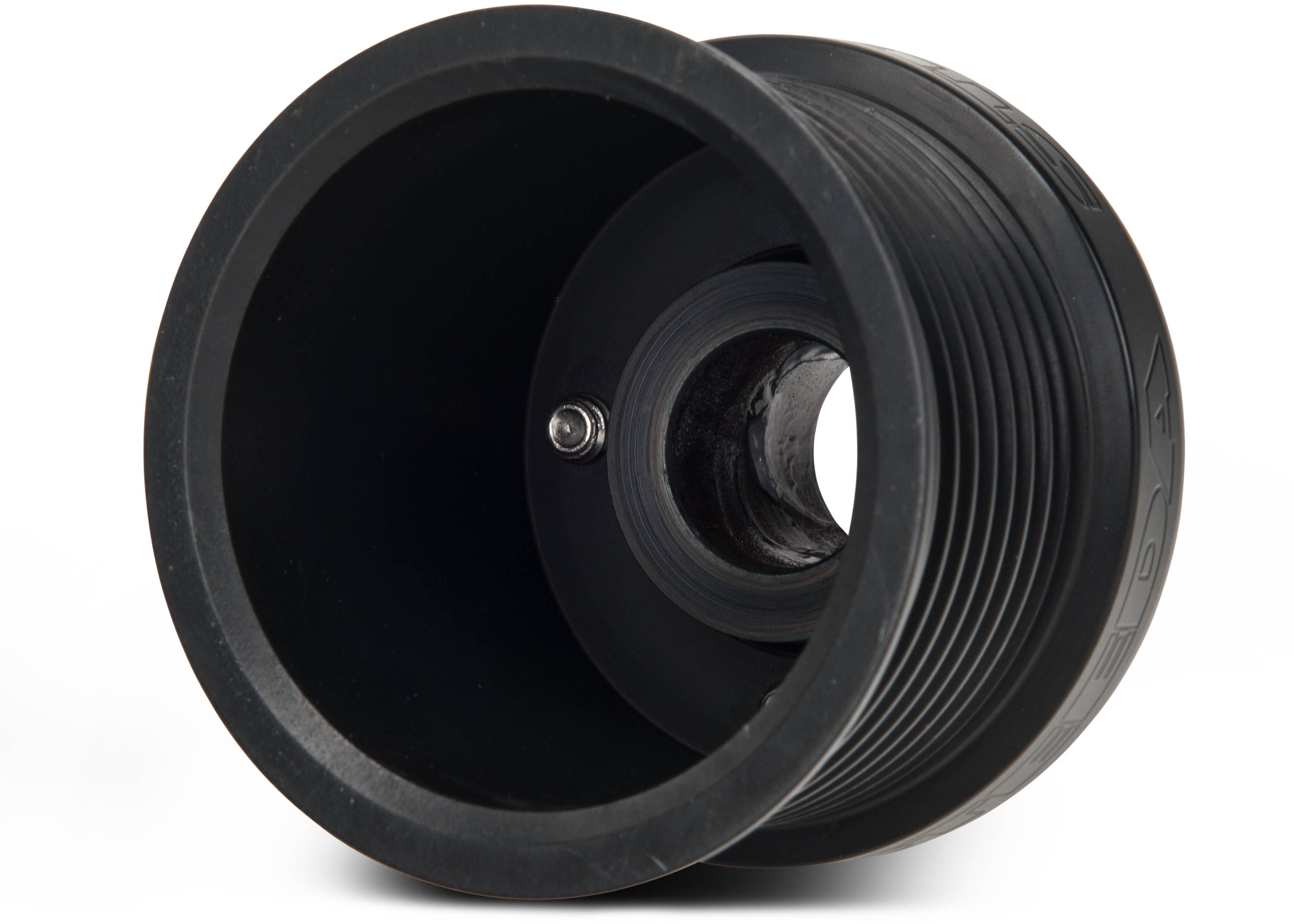The way a centrifugal supercharger works is as follows. Any supercharger is powered by the engine itself, meaning it is coupled to the engine's crankshaft via a belt and pulley. As long as the engine is running, the supercharger is spinning. As the supercharger spins, an impeller draws in air via an inlet (the hub). The air is drawn in through the intake side (commonly called the ‘fill’ side), the centrifugal force causes the air to radiate outward (recall: centrifugal means to move away from a center). At this point, the air is moving very fast, but with little pressure. An impeller then compresses the air and releases it out of the discharge side.
Boost numbers are made depending on how fast the supercharger is spinning and in conjunction with the pulley setup. Boost is directly proportional to engine RPM, so more RPM’s will give more boost. This also means you achieve maximum boost at max RPM. All other RPMs produce less boost.
Since superchargers run directly off the crankshaft pulley, it must mean like an alternator or any other accessory, they consume power to be driven. If you were thinking this, you are 100% correct. Just like any other accessory, a supercharger does place a parasitic draw on the engine. The cool part? Despite using up some power to spin the charger, a charger easily makes up for the power it draws.







